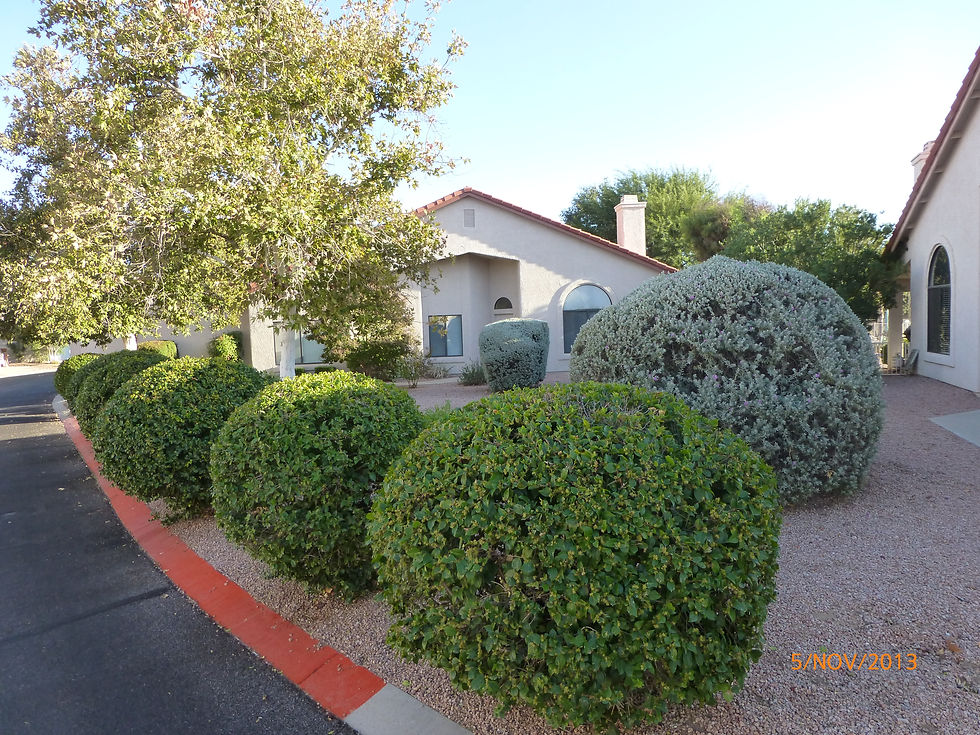Enhancing Spring Vitality: A Guide to Hard Pruning Dormant Plants for Homeowners Associations
- Deborah Munoz-Chacon
- Feb 20, 2024
- 2 min read
Updated: Mar 3, 2024
Photo by Sonoran Oasis Landscaping
As spring approaches, it's time for homeowners associations to prepare for the revitalization of community landscapes. One crucial aspect of this rejuvenation process is hard pruning dormant plants like lantana, oleanders, and Texas rangers. This practice ensures healthier, more vibrant plants throughout the upcoming seasons. Here are five key points to guide your homeowners association through the spring hard pruning process.
Promote Plant Health: Hard pruning is an essential step to promote the overall health of dormant plants. By removing dead or diseased branches, you allow for better air circulation and sunlight penetration. This reduces the risk of fungal infections, encourages new growth, and enhances the plant's natural defense mechanisms.
Stimulate Growth and Bloom: Dormant plants often have accumulated dead wood, inhibiting the growth of new shoots and flowers. Hard pruning removes these impediments, stimulating the development of fresh, new branches. Encourage homeowners to envision a burst of color and blossoms as a result of this intentional pruning practice.
Shape and Aesthetics: Hard pruning provides an opportunity to shape and define the aesthetic appeal of the landscape. Emphasize the importance of maintaining a well-groomed and visually pleasing environment. Work with homeowners to identify key focal points and ensure that the pruning process aligns with the overall design goals of the community.
Seasonal Timing Matters: Timing is crucial when it comes to hard pruning dormant plants. Late February to early March (after the last freeze) is an ideal time for this task, as it allows the plants to recover and utilize the energy stored during dormancy. Emphasize the importance of starting the hard pruning process early in the spring to maximize the benefits and ensure a lush, vibrant landscape throughout the warmer months.
Educate Homeowners: Equip homeowners with the knowledge and tools needed to contribute to the success of the hard pruning process. Provide guidelines on proper pruning techniques so they understand that the plants will rejuvenate and look better than before the hard pruning. Hard pruning encourages seasonal blooms and reduces maintenance needed for shearing older, woody plants.
Spring hard pruning is a valuable investment in the long-term health and beauty of your community's landscape. By embracing this practice, homeowners associations can create a thriving, visually appealing environment that enhances the overall quality of life for residents. Encourage collaboration and community pride as you embark on this journey towards a greener and more vibrant spring landscape. A helpful tip is to hard prune one out of every three dormant plants each year. This way the community's plants are being rejuvenated without cutting down all the plants at one time.
Call us at (520) 546-2994 if we can help your community with its hard pruning plan or any other landscaping issue you may have.
Article by Deborah Munoz-Chacon
Sonoran Oasis Landscaping










Comments